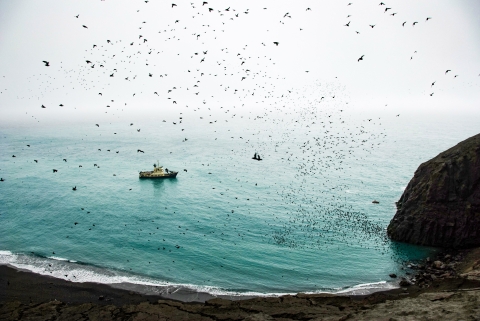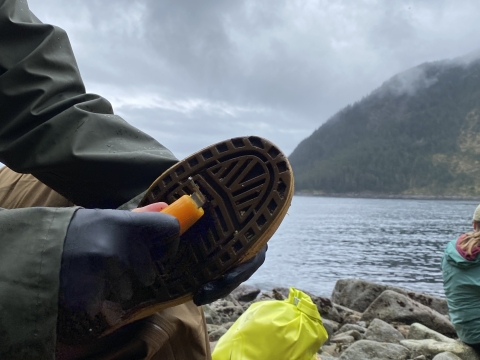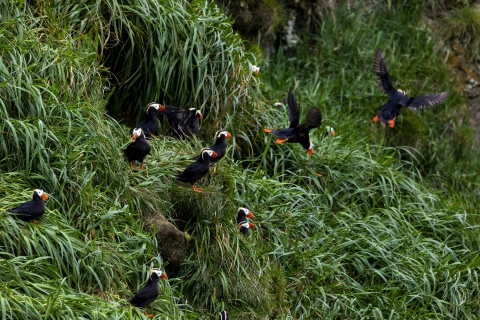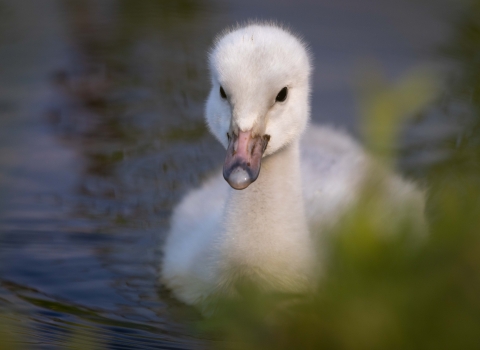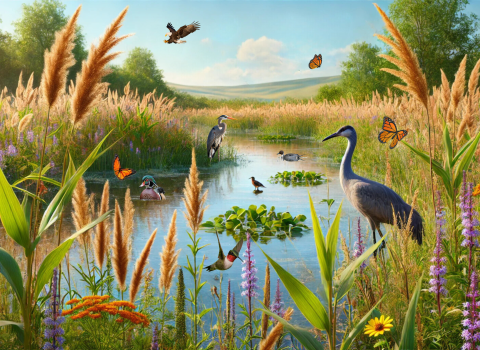Invasive species are uninvited organisms that damage the National Wildlife Refuge System, an unparalleled network of public lands and waters that conserves fish, wildlife, plants, and their habitats for generations of Americans. Removing an established invasive species invasive species
An invasive species is any plant or animal that has spread or been introduced into a new area where they are, or could, cause harm to the environment, economy, or human, animal, or plant health. Their unwelcome presence can destroy ecosystems and cost millions of dollars.
Learn more about invasive species from a National Wildlife Refuge can take years of planning and cost millions of dollars, while preventing the arrival of an invasive species is a fraction of the cost. In fact, one method for keeping invasive species out of Refuges is nearly free: all you need is a stiff brush and some elbow grease.
Want to protect your favorite Refuge? Start by scrubbing your boots.
Are my shoes actually a problem?
YES! Footwear is a dominant means of introduction for invasive plants, invertebrates, and pathogens because the treads can transport seeds, plant parts, soils, microscopic eggs, feces, and other biologically active material to new places while walking. A 2008 study quantified the risk of dirty shoes for transporting seeds. Researchers in Antarctica sampled the clothing, footwear, and gear of 40,000 visiting tourists and scientists using a vacuum and discovered more than 70,000 seeds from 40 floral families. Almost half the seeds hitchhiked on footwear! In comparison, the National Wildlife Refuge System receives over 67 million visits annually across 95 million land acres. Every visitor represents a potential introduction.
Cleaning is for the Birds (and all the other animals and plants, too).
Scrubbing footwear is a common biosecurity practice in isolated, protected places chockablock with iconic wildlife. For example, Alaska Maritime National Wildlife Refuge is composed of thousands of islands totaling 4.6 million acres, nearly two-thirds of which is Designated Wilderness, and home to 40 million nesting seabirds and dozens of other endemic species. Staff have adopted boot washing in addition to other practices such as packing gear in rodent-proof containers as a part of a biosecurity program focused on maintaining intact ecosystems, preserving wilderness character, and protecting native species. Many surrounding areas, including the Refuge headquarters in Homer, Alaska, common ports of call, and about 40 Refuge islands are known to host invasive species. In addition, highly pathogenic avian influenza A(H5N1) is present in Alaska. To prevent the introduction of invasive species or disease to the seabird colonies, we wash our boots, clothing, and gear before leaving Homer and again between islands while aboard the Refuge’s research vessel, Tiglax. We invite you to join our boot washing practice before you visit your favorite Refuge this summer. Many Refuges throughout the System are isolated, much like islands, and deserve the same consideration.
Individual accountability can make a difference.
Here is how to prepare your footwear for a visit to a National Wildlife Refuge:
- Turn on the lights—your cleaning area should be clean and well lit.
- Choose slick, impervious materials. Leather and rubber are great because they are easier to clean. Woven materials and mesh trap seeds.
- Wash the soles with soap and hot water. Scrub with a stiff brush. If the treads are deep (like Xtratufs), use a flathead screwdriver, hoof pick, or butter knife to dig out stuck material.
- Wipe or scrub the shoe uppers as necessary to remove debris.
- Use tweezers to pick out tough seeds and hair.
- Loosen laces to check the tongue.
- Remove the insole and vacuum the interior using the crevice tool.
- Dry fully before storing.
- Change into your clean footwear when you arrive on the Refuge.


